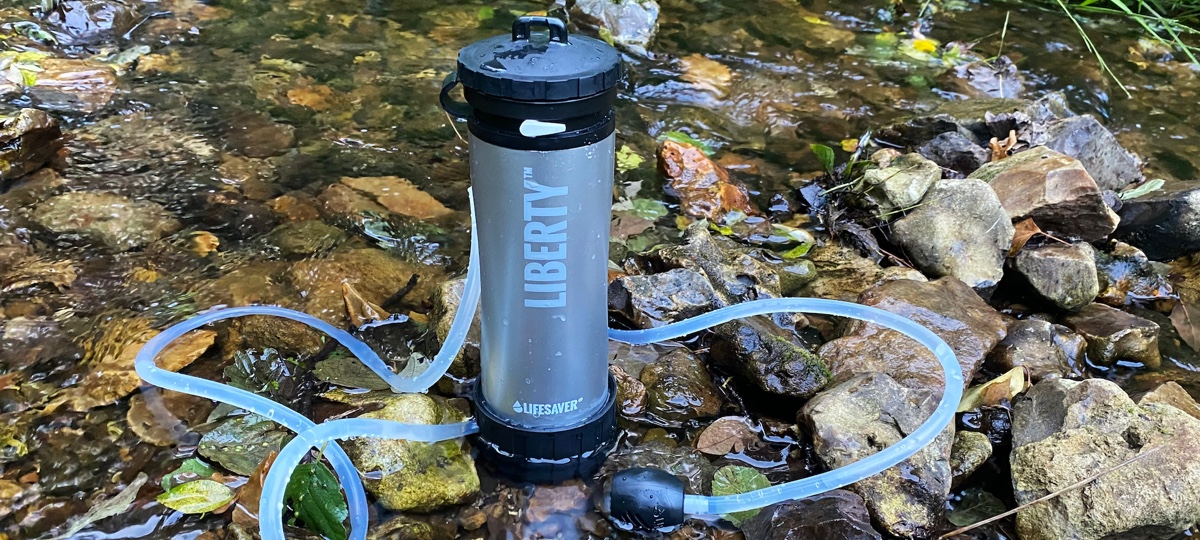Advnture Verdict
A portable pump-activated water purifier, the Liberty water-purifying system from British brand LifeSaver is a compact, easy-to-pack, easy-to-carry solution for hikers and campers who need to stay hydrated on the trails and during overnight and longer expeditions. Complete with a scavenger hose – which makes it very versatile and means you can source water in all kinds of outdoor scenarios – the LifeSaver Liberty reliably catches and removes viruses as well as bacteria and protozoa, and it even makes the water taste better.
Pros
- +
Effective against viruses
- +
Scavenger hose makes water collection easy
- +
Fast flow rate
- +
Quick results
- +
Fits in backpack bottle pockets
- +
Activated carbon discs improve taste & odor
- +
Screws into many wide-mouth water containers
- +
Auto shutdown when filter membranes are blocked
Cons
- -
Limited carry capacity (400ml)
- -
Bulkier and heavier than a water filter
You can trust Advnture
LifeSaver Liberty purifier: first impressions
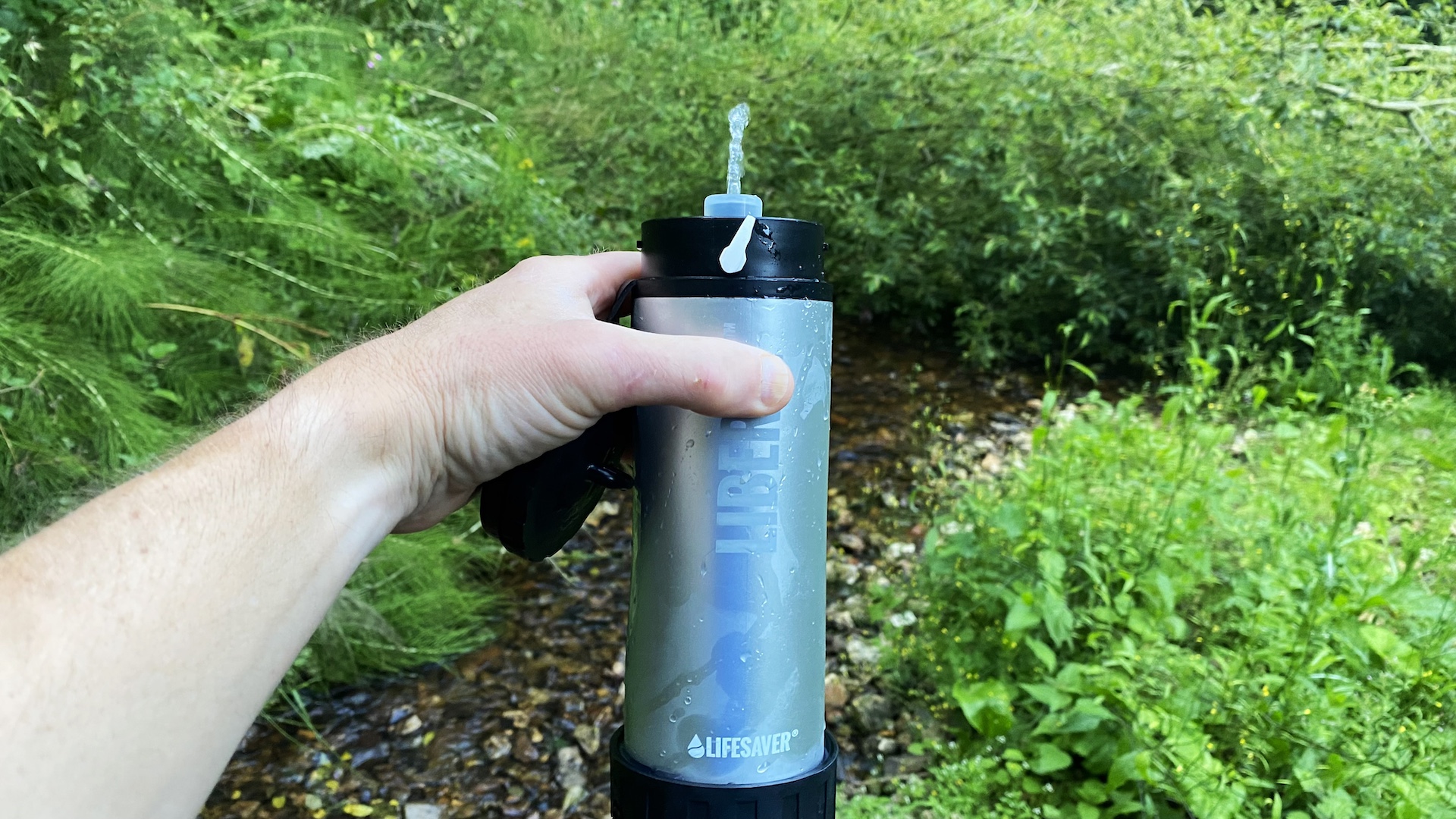
Access to safe drinking water is a human need and presents a problem for people in all kinds of scenarios, from entire communities caught up in extremely challenging circumstances through to professional explorers and service personnel, and recreational hikers, campers, canoeists and kayakers venturing out into remote areas for long periods of time.
The LifeSaver story began in the wake of two natural disasters: the catastrophic Indian Ocean tsunami in 2004 and Hurricane Katrina, which decimated New Orleans in 2005. These events spurred British inventor Michael Pritchard into creating an effective, portable water purification device that would provide people with a sustainable way to source safe and clean drinking water. This led to the invention of the LifeSaver Bottle in 2007, which proved so good it was adopted by the British Army, and has since evolved into a range of water-purifying products, including the LifeSaver Liberty, which I’ve been testing to see how it compares to the best water filters and purifiers on the market.
LifeSaver Liberty purifier: design and materials
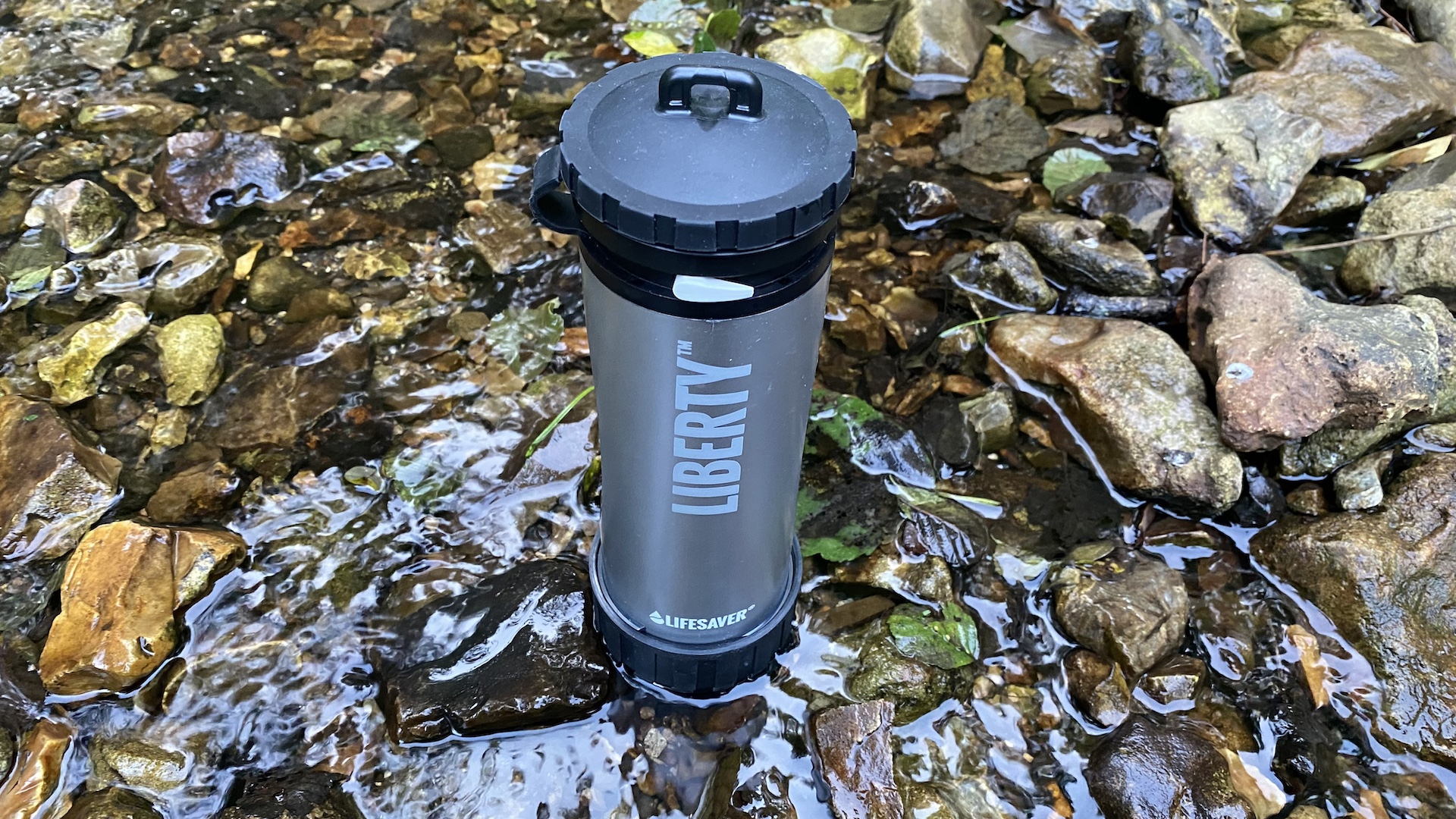
• List price: $124.95 (US) /£119.99 (UK)
• Style: Pump action purifier with scavenger hose
• Rate: 1.2L per min
• Capacity (per fill): 400ml / 14fl oz
• Lifetime capacity (ultrafiltration cartridge): 2,000L
• Weight: 425g / 15oz
• Dimensions (diameter x height): 8cm x 25.5cm / 3.15in x 10in
• Hose length: 1.5m / 5ft
• Active tech: Ultrafiltration cartridge & activated carbon disc
• Microbiological pore size: 0.015 microns
• Effective against bacteria? Yes (99.999%)
• Effective against particulate and protozoa? Yes (99.999%)
• Effective against viruses? Yes (99.999%)
• Effective against metals, chemicals/toxins? Yes (with Activated Carbon Disc – lasts 100L)
• Colors: Blue / Black / Orange
• Compatibility: Camping, canoeing, road trips, adventure travel
While water filters, such as the LifeStraw, are excellent lightweight devices for removing bacteria (such as E. coli, salmonella and other dysentery-causing bugs) plus particulates (microplastics, sediment, silt) and protozoa (like giardia, cryptosporidium, cysts and amoebae) from water, they don’t catch waterborne viruses, including rotavirus, norovirus and hepatitis A. To protect yourself from such serious nasties, you need a more comprehensive water purifier – like the LifeSaver Liberty.
This system features a filter with a smaller microbiological pore size (0.015 microns), so it catches near enough 100% of all viruses, along with any bacteria, particulates and protozoa that might be in the source water. The system is activated using a hand-operated pump, which creates pressure in the main unit and forces the ‘dirty’ water through the filter into a sealed 400ml ‘clean’ section of the container on the other side.
Each filter will purify roughly 2,000L of water (the exact amount depends on the level of pollutants and particles in the source). A clever failsafe design ensures that once the microfilter has reached the end of its useful life, the system will stop allowing fluid through at all, so you can’t mistakenly drink water that hasn’t been properly purified. At this stage, you simply replace the filter-containing cartridge ($61.99 / £59.99) and the system is good to go for another 2,000L – which is a lot of water, if you visualize what 1,000 2L bottles would look like lined up (let alone imagine what all that fluid would weigh).
On the top of the filter, the system also features an activated carbon disc, which not only removes heavy metals from the fluid, but also makes the water smell and taste better. This carbon disc does need to be swapped more regularly than the filter (it’s good for about 100L), but replacement discs are relatively inexpensive ($15.49 / £14.99 for a pack of three), and the system can still be safely used without it – it’s just that the water might not taste quite as nice.
Meet the reviewer
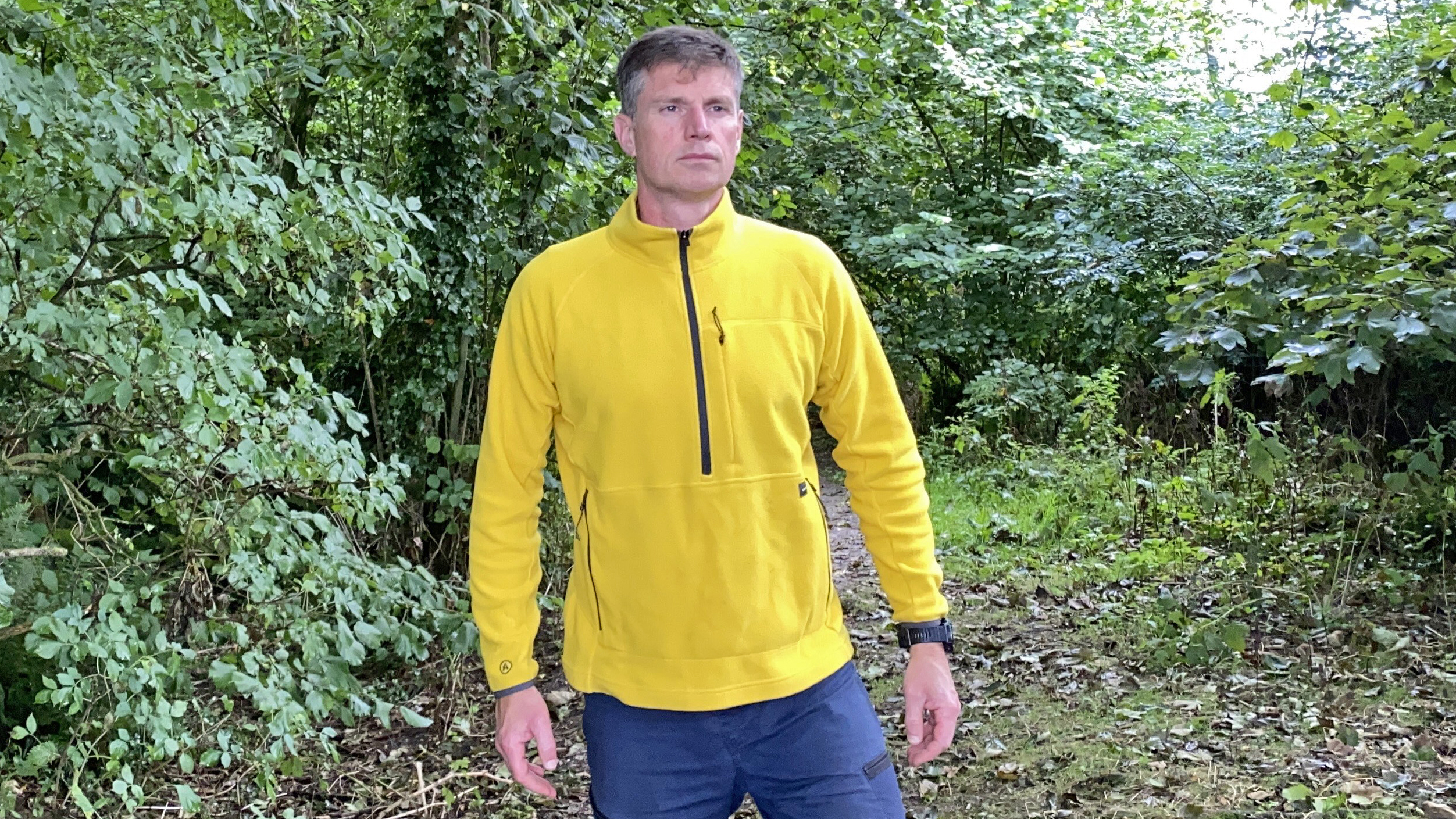
Pat has run thousands of miles on the trails, and has taken part in an ultra across the roof of Mauritius, as well as setting short-lived records for trail-running Australia’s highest peaks and New Zealand’s Great Walks. He’s also an experienced tester of running gear, and gives kit a thorough thrashing before handing in his reviews.
LifeSaver Liberty purifier: on the trails
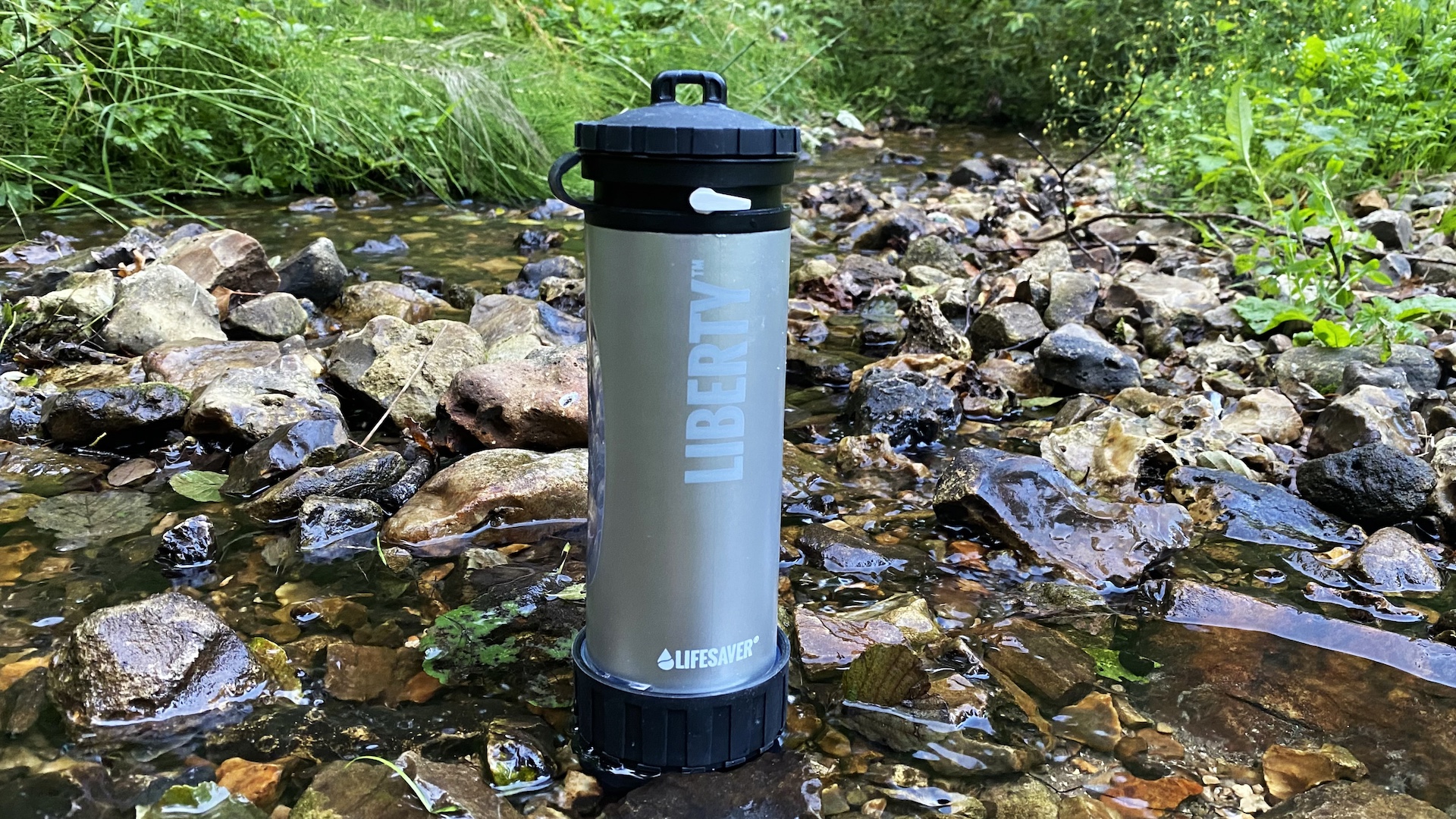
If you’re hiking in the remote backcountry, and taking water from mountain streams quite close to the source, then a simple filter is probably perfectly adequate. But if you’re on an adventure that might see you relying on water from lakes, rivers and brooks that could potentially have been polluted by people or animals further upstream, a purifier like the LifeSaver Liberty is a much safer bet. Plus, this particular purifier also removes chemicals and heavy metals (such as lead) and it has an activated carbon disc in the mix, which makes the water smell and taste sweeter.
All the latest inspiration, tips and guides to help you plan your next Advnture!
Over the last few months, I’ve been using the LifeSaver Liberty water purifier while hiking and camping in areas that are wild, but where the water I’ve been collecting to drink has travelled some distance, raising the risk that pollutants (bacteria, viruses and other potentially harmful invisible ingredients) may have entered the ecosystem from farmland runoff and human activity. It’s not a very nice thought, but you need water to survive, and there’s only so much you can carry, so having a piece of kit that can catch and remove viruses as well as bacteria is invaluable. (You could, of course, use a camping stove to boil water for three minutes or more, which should make it safe to drink, but this is laborious, time consuming and heavy on fuel, plus it won’t remove particles of grit and silt, so the only way to really cleanse the water and make it properly potable is by running it through a purifier like the Liberty.)
Like all purifiers, the LifeSaver Liberty is a more costly, bulkier and heavier piece of kit than a simple straw-style filter, but it does come with its own container (so you can purify water and then transport it in the unit). However, considering its advanced capabilities, I found the Liberty to be a pretty compact and easy-to-pack-and-carry system. It doesn’t really take up much more room than a standard hiking water bottle and the entire system easily fits into the side pocket of a good hiking backpack or daypack.
There are two ways of using this system to harvest water: you can simply unscrew and remove the lid from the main container and then scoop up a load of H2O. Alternatively, you can attach the scavenger hose (which comes included with the system), dangle that into a river, stream or lake, and pump water into the container (filtering it as you do). If you have simply scooped water up, you then need to use the pump action device to create pressure in the container, which forces the water through the filter. You then flick a lever and the drinkable, pressurized water comes spurting out the nozzle on top of the container.
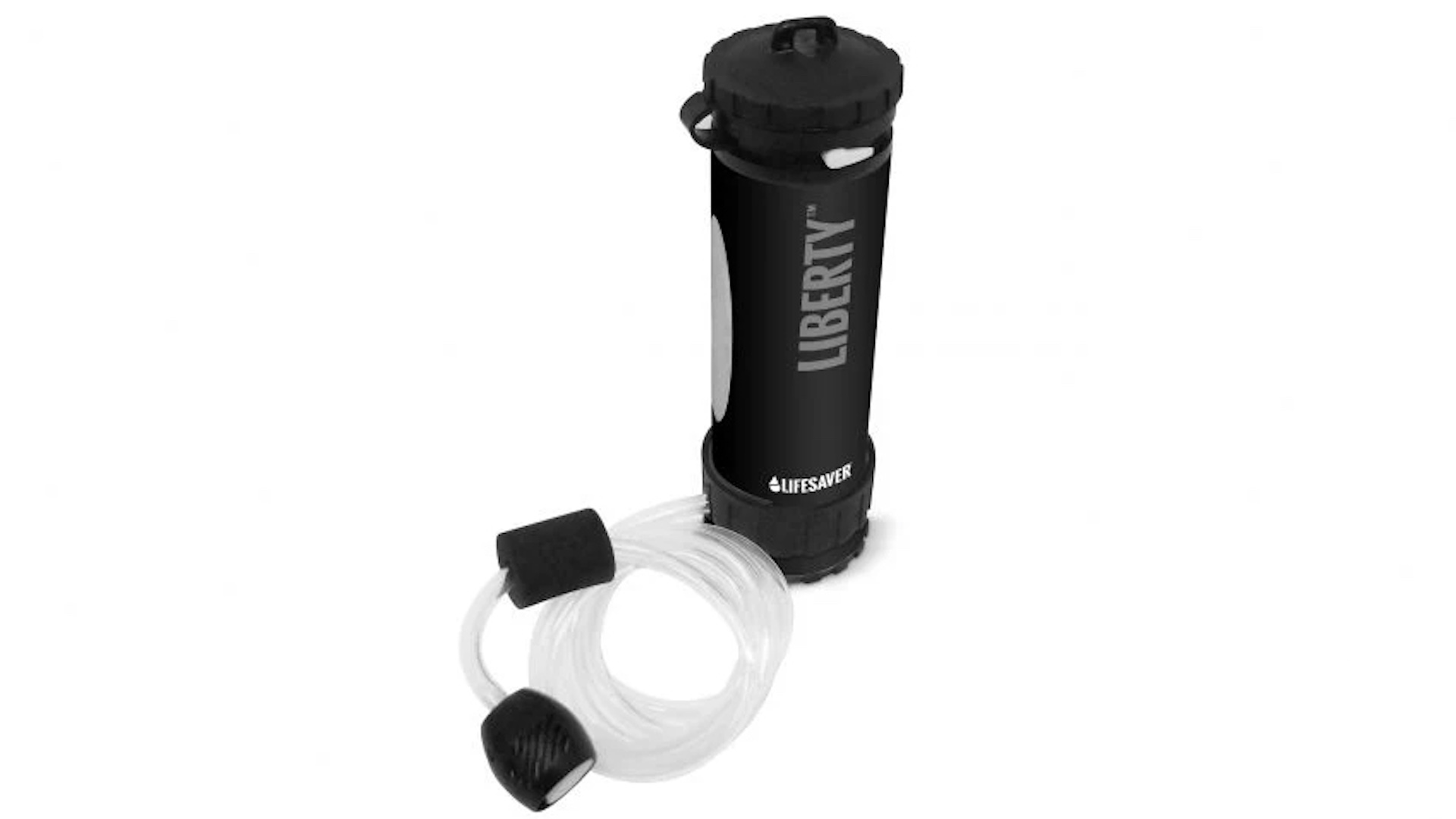
You can drink it directly from the unit, or decant a supply into a water bottle or hydration pack for use further along the trail. And besides decanting drinkable water into a separate bottle, you can use the main container to transport a limited amount (400ml) of purified water.
In my experience, the scavenger hose, which features a float (so you can avoid dragging it along the bottom and sucking up a load of silt and who-knows-what), is really useful when sourcing water from rivers and streams with high banks. All in all, it’s a very easy system to operate once you’ve used it a few times. But because it’s been pressurized, the fluid comes shooting out the nozzle fast when you first flick it open, so you need to be ready to drink or direct it into a separate container fast, lest your efforts (and your precious water) go to waste.
Although they’re not 100% necessary for making the water safe to drink, I found the activated carbon discs really effective at removing bad odors and tastes from the water – I found that, even when drawn from distinctly unappealing-looking sources, the water tastes relatively sweet when it’s been pumped through the Liberty, and I recommend investing in some replacement discs so you can replace them when required.

Author of Caving, Canyoning, Coasteering…, a recently released book about all kinds of outdoor adventures around Britain, Pat has spent 20 years pursuing stories involving boots, bikes, boats, beers and bruises. En route he’s canoed Canada’s Yukon River, climbed Mont Blanc and Kilimanjaro, skied and mountain biked through the Norwegian Alps, run an ultra across the roof of Mauritius, and set short-lived records for trail-running Australia’s highest peaks and New Zealand’s Great Walks. He’s authored walking guides to Devon and Dorset, and once wrote a whole book about Toilets for Lonely Planet. Follow Pat’s escapades on Strava here and Instagram here.
